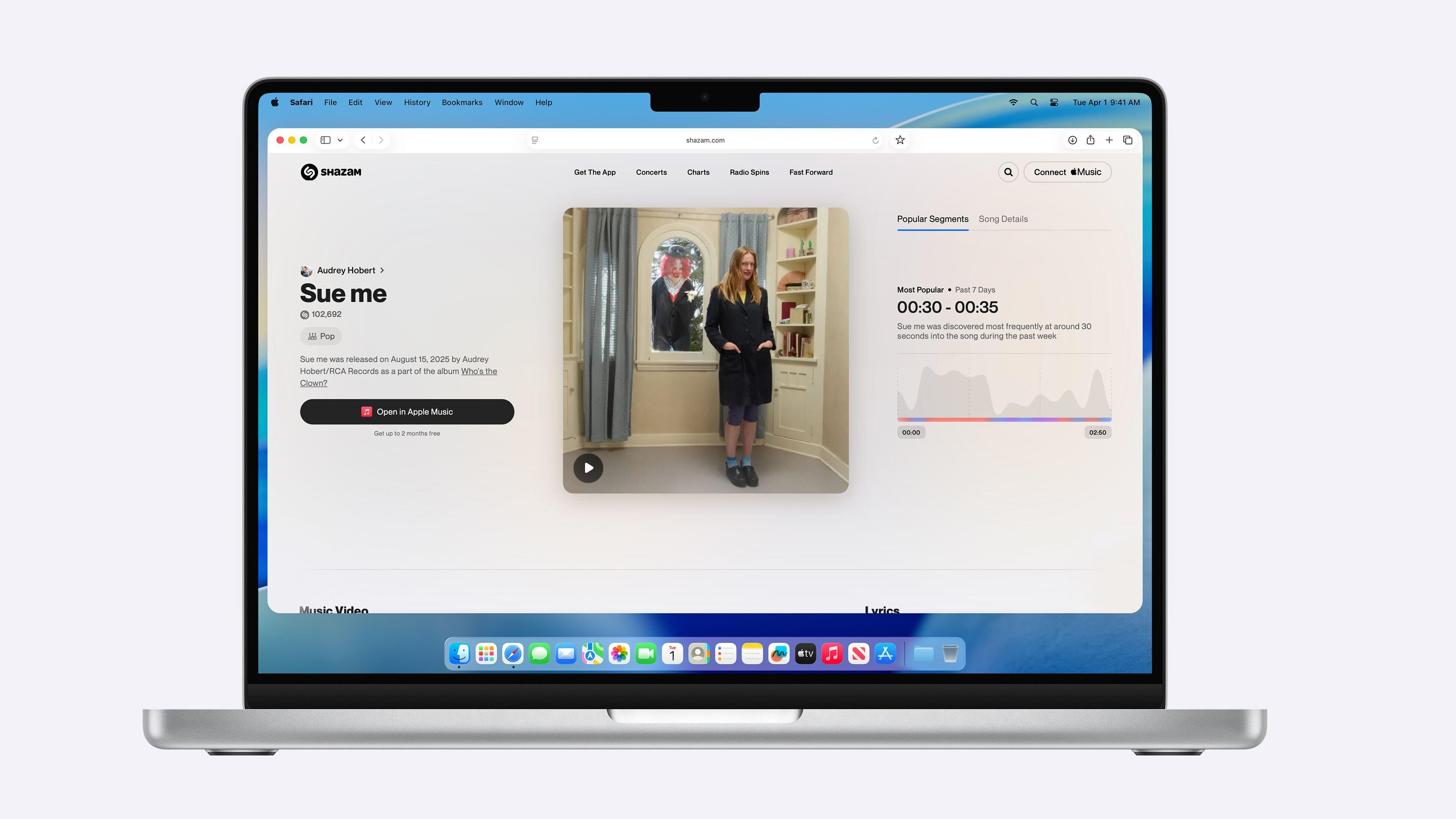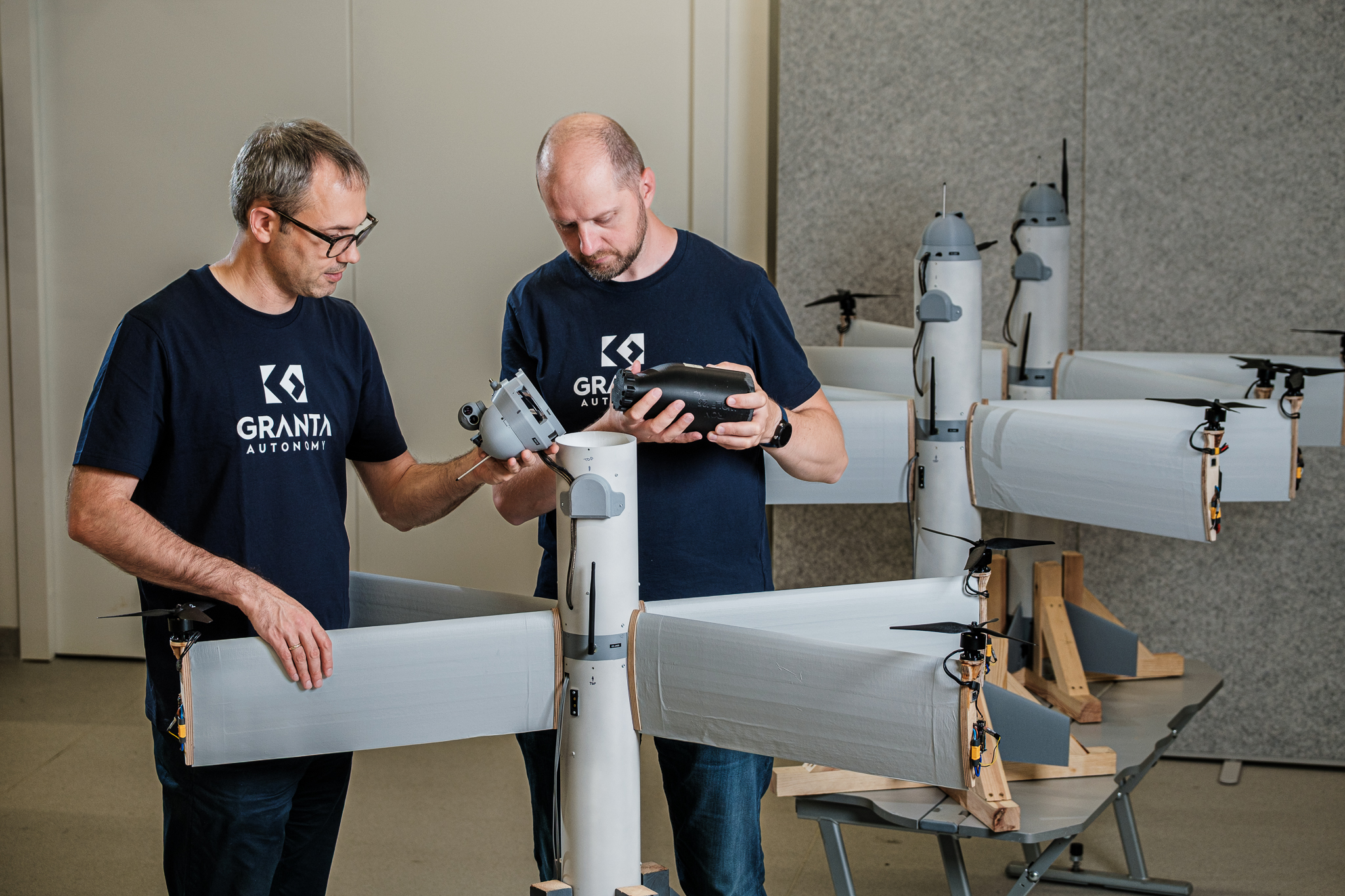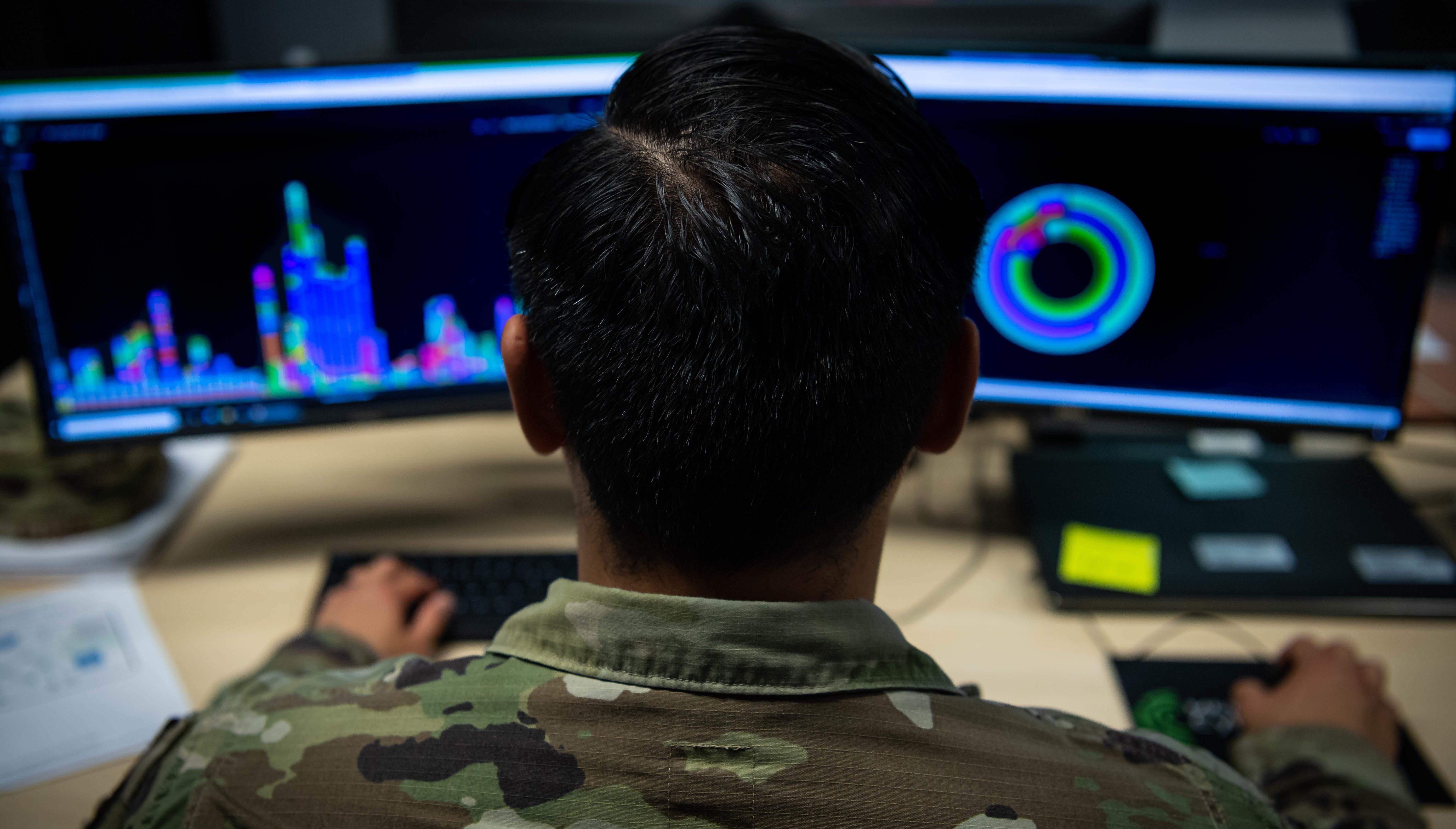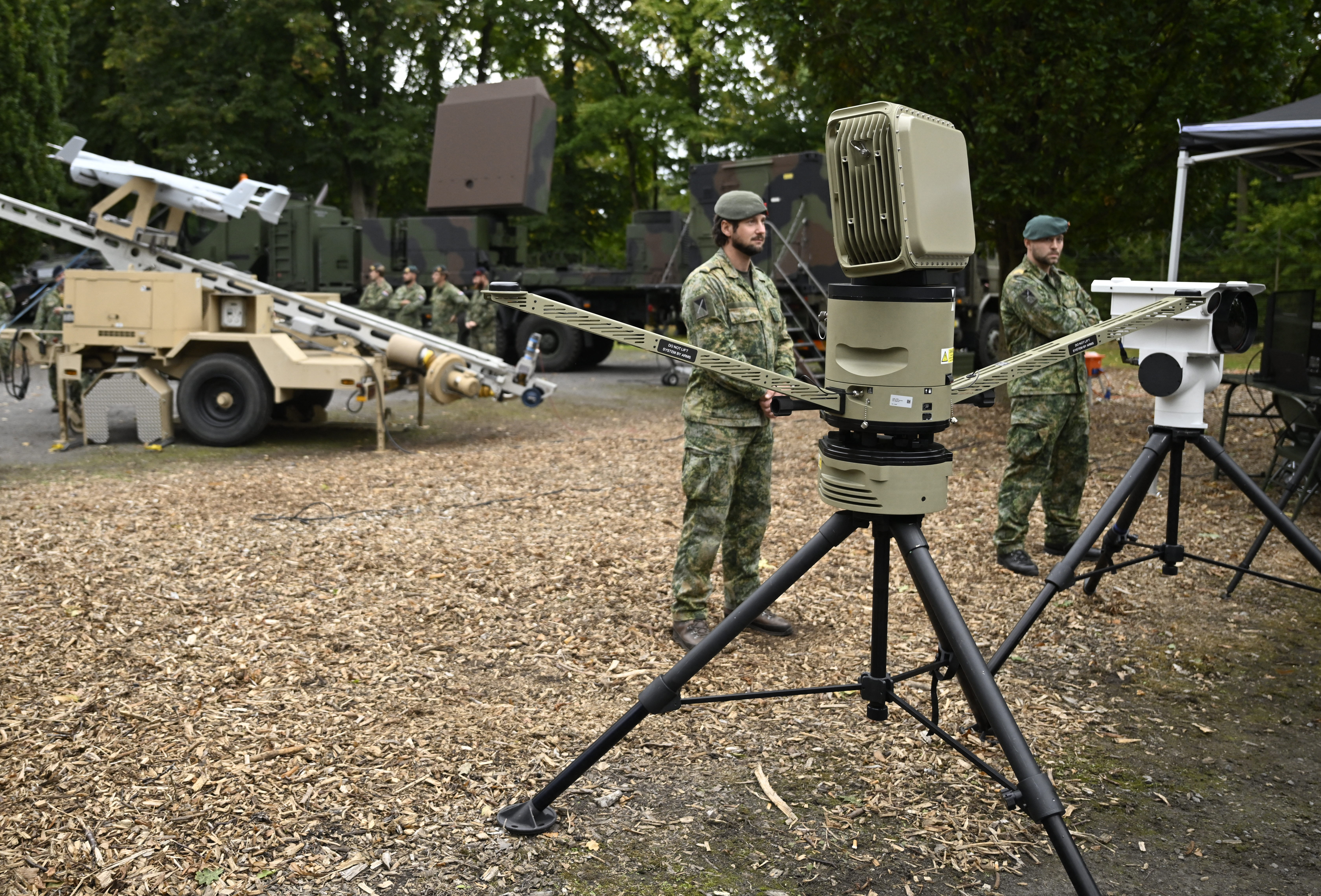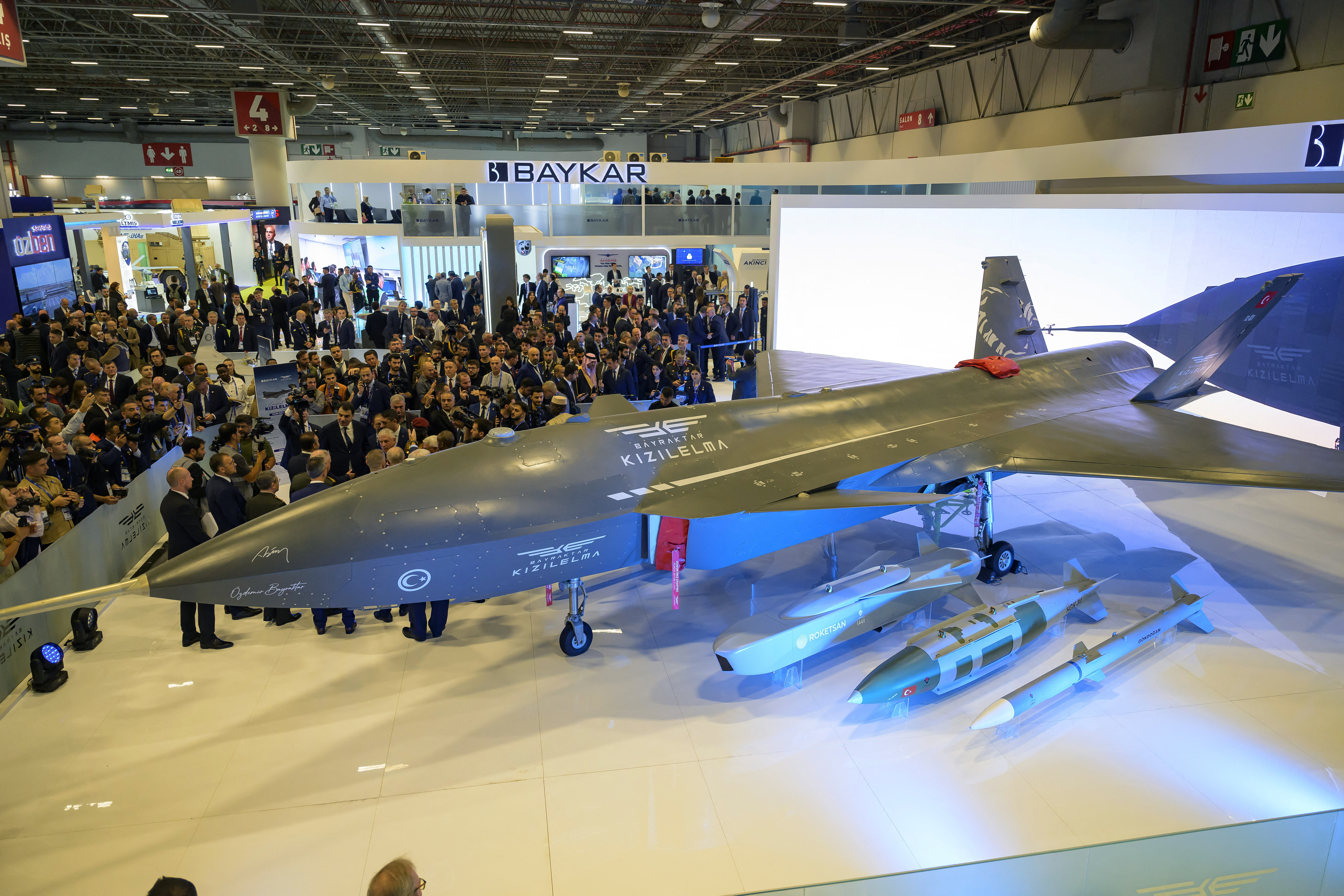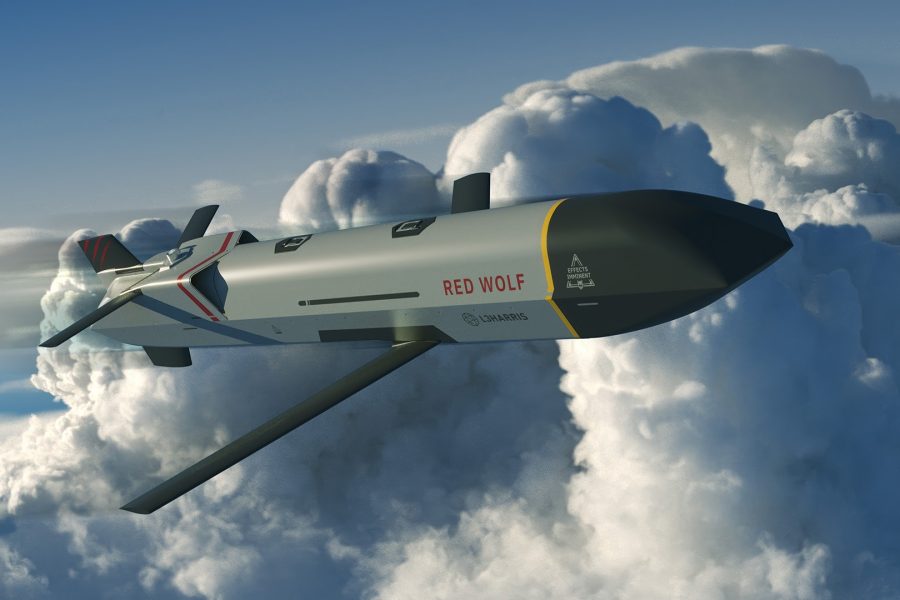
L3Harris unveiled a new “Wolf Pack” series of unmanned aerial vehicles July 17, meant to overwhelm enemies with swarms of low-cost, paired kinetic and nonkinetic munitions, compelling defenders to expend more expensive weapons to stop them.
The newly revealed munitions join an increasingly crowded field of one-way or recoverable missile-like vehicles meant to have long standoff range and low cost, to create “affordable mass” capability. Similar systems are being developed or produced by Anduril Industries, Lockheed Martin, General Atomics, Zone 5 Industries, and others, under various programs within different military services.
L3Harris claims their versions cost around $300,000 to $400,000 per unit—depending on the payload—versus well over $1 million apiece for extant standoff cruise missiles.
Program officials said 41 test flights have been conducted with the Wolf Pack vehicles, and that the designs went from concept to production in less than five years.
The two new munitions, with nearly identical external mold lines, are named “Red Wolf” and “Green Wolf,” to denote, respectively, a kinetic effects munition and an electronic attack effects vehicle. Both are modular and can accept a wide range of payloads, they said, but they could not reveal the specific types of warheads.
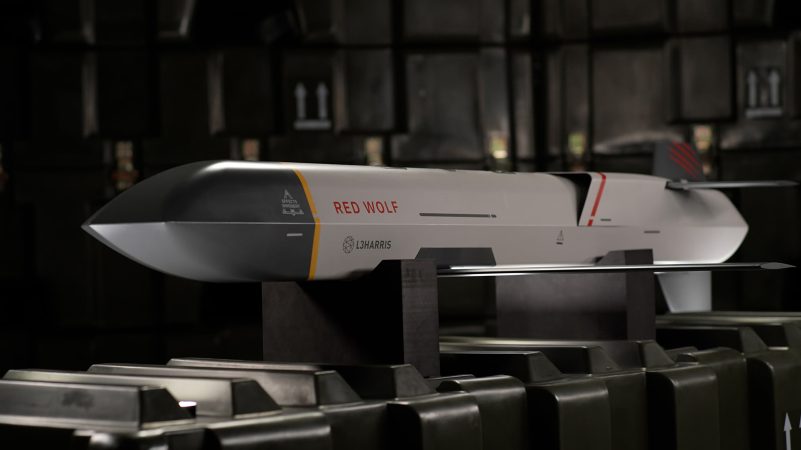
The Red Wolf can “detect, identify, locate and report” on what’s in the battle area, officials said. They declined to discuss seeker systems. The vehicles can collaborate and be retargeted during the mission, officials said.
The company sees the two weapons as being “launched together,” to “create chaos” in the strike area, said Jen Lewis, L3 president of airborne combat systems. In a notional scenario, Red and Green Wolf missiles would be air-launched from a helicopter or drone—or from a surface vertical launch system—and fly to the target area, where Red Wolf vehicles would jam defenses and potentially conduct post-strike damage assessment, while the Green Wolf vehicles would dive on targets to destroy them kinetically.
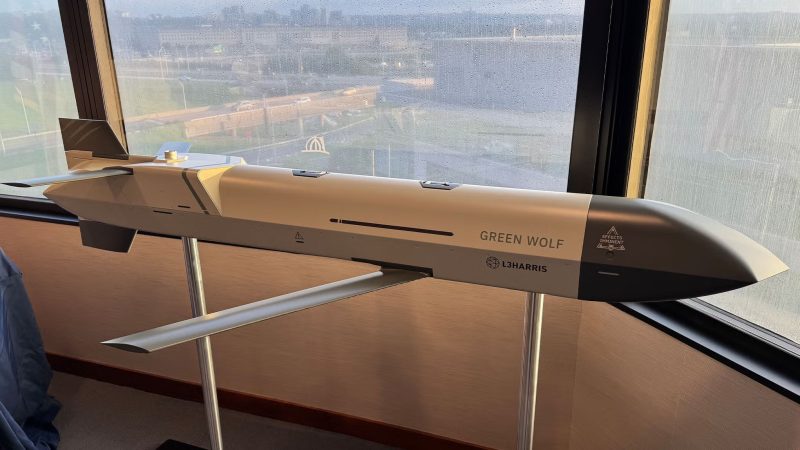
“You can think of these as open system architectures, multi-function processing and data solutions, as well as avionics infrastructure,” she said. The electronic warfare capabilities “are advanced, fully integrated suites,” she said. “We deploy those on tactical maritime and ground platforms, tactical airborne systems.”
The Red and Green Wolf are each “interoperable across domains, and the modular design really [give]…them that commonality. This really enables the DOD to cost share and get efficiency in their spending,” Lewis said. She said that that development and integration costs have already been expended, with “investments that we have made and our customers have made. They’re developed, tested, and proven.”
The craft have a “high subsonic” speed and a range of 200 or so nautical miles, with a ceiling of about 40,000 feet. Officials could not discuss survivability features, although the munitions are shaped in a way that suggests radar cross section was a factor in the design.
However, “we want our adversaries to see it, in many cases,” said Matthew Klunder, vice president for Navy/Marine Corps business. “We’d love for them to shoot them down with some $2 million to $3 million missiles,” which would be a cost-imposing factor on an adversary.
“There’s other times when we might not want them to see it,” he added, and that will affect the envelope in which the missiles are launched.
“Our whole goal is to give our warfighters the advantage, and we know how to do that,” he said.
Lewis said the modular vehicles allow the operator to select the desired effect without requiring a huge inventory of bespoke munitions.
“Think about the other things we can do here,” she said, “like decoys, target tracking, [communications] relay.” The vehicle software will “support swarming of autonomous vehicles as well.”
Klunder said the Wolf Pack is in low-rate initial production and is intended first to equip Marine attack rotorcraft like the AH-1Z and Navy Seahawk helicopters. At the moment, he said, L3Harris is not eyeing a specific Air Force requirement, but said the service is observing what the Navy/Marine Corps are doing with Wolf Pack and showing “tremendous interest.”
The company did not show loadout options on craft like the F/A-18E/F or F-35, but Klunder said 12 could be accommodated on the former. The munitions would fit inside an F-35’s weapon bay as well as on external racks.
Asked if the Green Wolf could supplant or complement the Air Force’s ADM-160 Miniature Air-Launched Decoy, Klunder said the Air Force “has the MALD, they know how to use it, they’re comfortable with it,” but Green Wolf could be a supplement, as it offers a lower cost, and likely more options on how it could be used.
As the Air Force “starts to see this operating in those kind of real environments, I think [it] is probably going to get very interested,” Klunder added. “And I can also tell you, we certainly could look at other ways” to deploy the weapon, such as “containerized versions” as used in the Rapid Dragon model, where pallets of weapons are launched out the back of a cargo aircraft.
“If they chose to utilize our munition, we could certainly provide it,” Klunder said.
Sterling Jones, vice president and general manager of the company’s agile development group, said some customers have requested that parachutes be added to allow recovery of some rounds for training purposes, and L3Harris was able to accommodate that request.
That allows flexibility to integrate higher-cost payloads, Jones said. He also said the systems are being built in Ashburn, Va., on a modular assembly line that is now spooling up production.
The post L3Harris Unveils ‘Wolf Pack’ Concept for Cheap, Kinetic/Nonkinetic Missile Swarms appeared first on Air & Space Forces Magazine.

Air, Air Force missiles, cruise missiles, drone swarms, L3Harris, low-cost munitions
Air & Space Forces Magazine
[crypto-donation-box type=”tabular” show-coin=”all”]


![AirPods Pro 3 Drop to New $199 Low Price on Amazon [Updated]](https://images.macrumors.com/article-new/2025/12/airpods-pro-3-glitter.jpeg)
